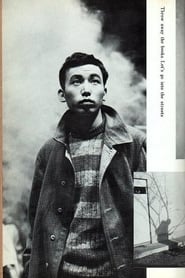People embrace the enchanting glow of the big screen for all manner of reasons; to journey to faraway places they could only ever imagine, to experience the escapism of a captivating story, or maybe to indulge in an obsession with the world of cinema. For me, all three of these reasons apply - and many more - but first and foremost is the satisfaction of recommending obscure films to other like-minded individuals who adopt them as their new favourites.
With over 100 years worth of films to choose from, and many of these now available at the click of a button, it can be extremely difficult to narrow your choices down to pick a film to watch. Although cinema has been around for over four times longer than my life on this earth, I have spent what some may consider an unhealthy amount of these years delving into the history of films to discover some of the best hidden gems out there.
Runtime - 137 Minutes
Throw Away Your Books, Rally in the Streets is a surreal psychedelic experience like no other. Director Shuji Terayama takes you into the heart of post-war Japan and its descent into materialism through a series of loosely connected vignettes that follow an angst-ridden teenager and his dysfunctional family. By creating a distinct style that encompasses a wide range of experimental techniques, Terayama voices his political statement with a kinetic vigour that is visually arresting and volatile. Music plays a huge part in his creation; the progressive punk soundtrack has the capacity to stir emotions with its thumping anthems echoing the troubled times of a city in upheaval and its rebellious cries evoking the misaligned motives of its youthful residents. This is a film that tells a story in an unusual but powerful way as it ambitiously bypasses the conventional methods of cinematic storytelling and fuses its imagery with raucous music to inject the medium with a raw and infectious energy.
 Many of the bizarre, dreamlike sequences that act as short
interludes or scenes of escapism for the adolescent at the heart of the film
elicit the traits of a Jodorowsky film. The strange, ethereal quality of these
shots can be both hypnotising and disorienting; though they never seem too
disjointed from the segments that precede them due to the director’s masterful
use of sound and colour schemes that thematically unify the picture as a whole.
The enchanting cinematography belies the inherent frustration that bubbles away
under the surface, a palpable frustration that builds and threatens to burst at
the seams as the film launches into tirades on the state of Japan’s disaffected
population.
Many of the bizarre, dreamlike sequences that act as short
interludes or scenes of escapism for the adolescent at the heart of the film
elicit the traits of a Jodorowsky film. The strange, ethereal quality of these
shots can be both hypnotising and disorienting; though they never seem too
disjointed from the segments that precede them due to the director’s masterful
use of sound and colour schemes that thematically unify the picture as a whole.
The enchanting cinematography belies the inherent frustration that bubbles away
under the surface, a palpable frustration that builds and threatens to burst at
the seams as the film launches into tirades on the state of Japan’s disaffected
population.
Terayama is an early adapter of shaky cam and uses the
jarring effect to reflect the agitation of his protagonist in moments where he
flees or is forced away from uncomfortable or uncompromising situations. This
can prove testing at times but is a hallmark of the director’s propensity for
pushing the boundaries of cinema by creating provocative imagery that
stimulates a response from the viewer. His radical approach to film-making
exhumes a talent that seems almost unnatural when you consider that Throw Away
Your Books, Rally in the Streets is the accomplished director’s feature film
debut.
If you take the time to watch Throw Away Your Books, Rally in the Streets then it would be awesome if you could also take the time to let me know what you thought of it, either by commenting below or tweeting me @filmbantha. Thanks, and enjoy!




No comments:
Post a Comment